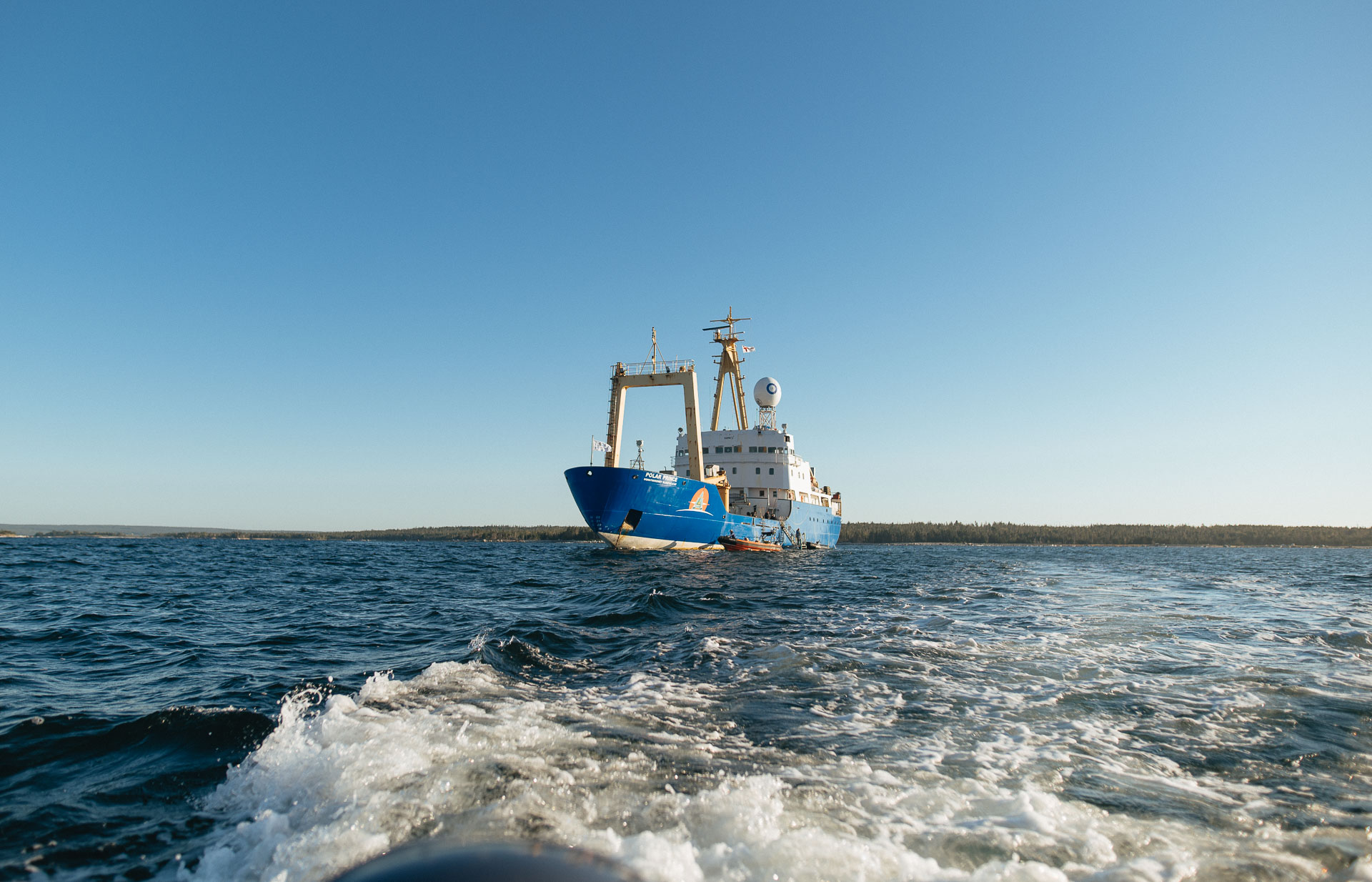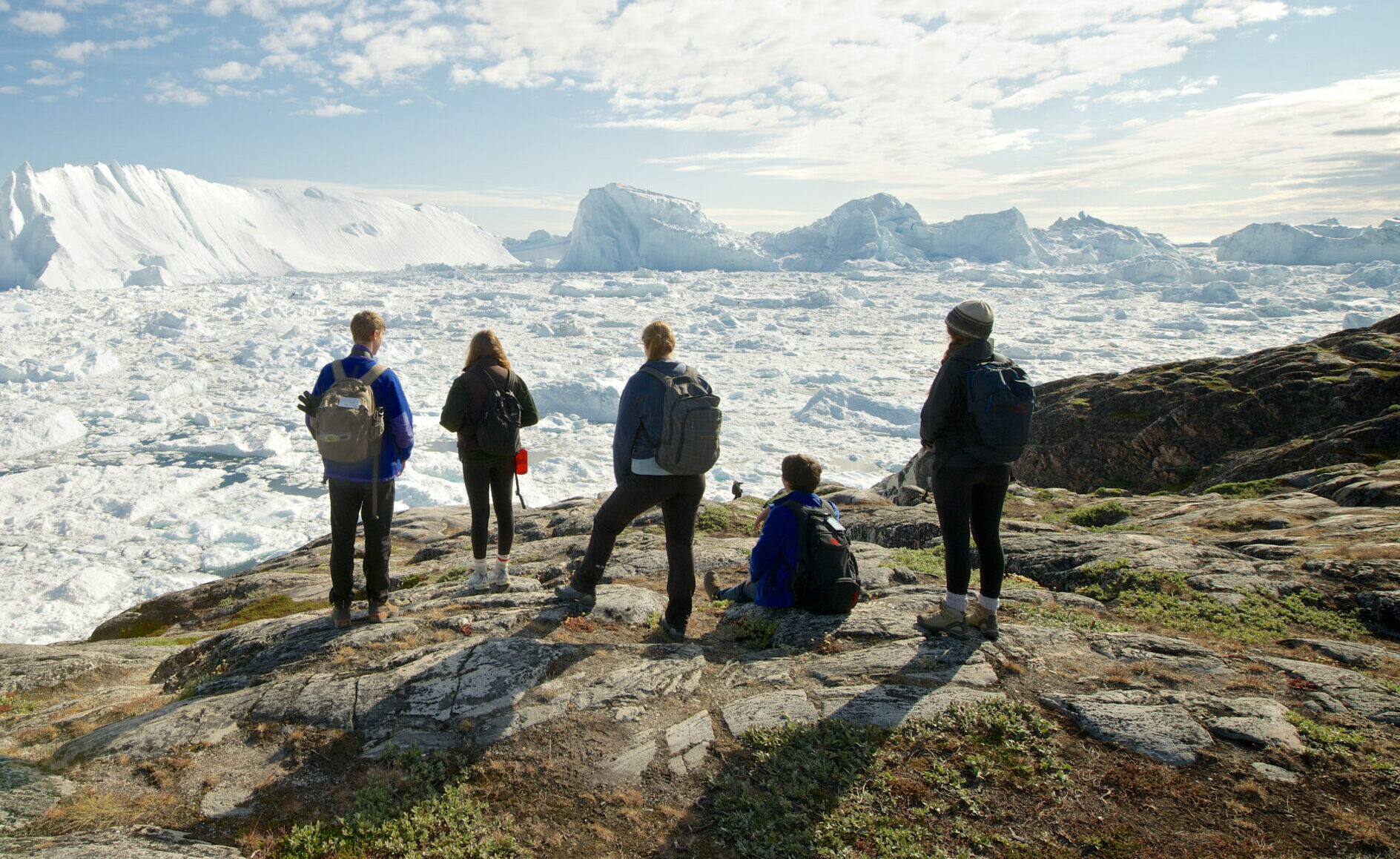Torngat Mountains Expedition: Full Recap
The Torngat Mountains Expedition 2023 may be over, but our journey as climate leaders is just beginning! As part of the Ocean Decade initiative, this journey brought 21 youth ages 14-18 together with a team of educators comprised of Elders, researchers, artists, and media professionals to explore some pending protected and conserved areas while engaging in experiential learning. Our diverse team came from all over the world, including 5 different countries and was over 58% Indigenous! The 16-day expedition took us from Ottawa through the Torngat Mountains National Park to teach us about ocean and coastal community health, Indigenous knowledge, and youth leadership.

The journey started in Ottawa where the team got to know each other rather quickly with bonding activities ranging from challenges at the Museum of Nature’s Northern Heritage Campus to some zip-lining at Camp Fortune in Chelsea, QC. Our team then flew to Halifax where we enjoyed the Atlantic Harborfront; which for a few students, was their first time touching or even seeing ocean water. As a bonus, we attended the Indigenous Summer Games and cheered on the athletes. The team bonding continued in Happy-Valley Goose Bay as we explored Birch Island before a rainy ship boarding. Even before we had made our first scheduled landing we spotted some famous Canadian wildlife – a polar bear.

Our first anchoring was in Nain, the northernmost and largest community in Nunatsiavut. Founded in 1771 by Moravian Missionaries, it is among the oldest permanent Inuit settlements in Canada. Nain is the administrative capital of the Nunatsiavut government and is the gateway to the Torngat Mountains National Park, making it a hub of activity for the region. While we were here, two youth participants proudly showed us their hometown.
The next day we anchored at Hebron, a former Inuit community and national historic site in northern Labrador. After forced relocation in 1959, Nunatsiavummiut have returned as stewards of Hebron. We were honoured to attend a ceremony in the church with the Ambassadors of Hebron. Participant Simeonie Merkurastsuk shared that, “Hebron is home. It feels like a long time away. I am home.” Hebron is now a place for reflection, healing, and hope. We left very aware of how special it is to visit Hebron.

From there, our team set sail to the northern tip of Newfoundland and Labrador. We officially entered the Torngat Mountains National Park when we anchored at Saglek Fjord Torngat Mountains Base Camp also known as “Home Base.” The park’s name comes from Torngait, the Inuktitut word for “place of spirits” and it lives up to its name as we were greeted by some minke whales as we entered the park. After some time exploring Base Camp we continued onto the idyllic Silluak (North Arm Fjord.) Considered one of the jewels of the Torngat Mountains, it is the most photographed area of the Park.
We then headed to Sallikuluk (Rose Island) where Tienne Johnson, an archeologist from Memorial University, shared “Sallikuluk (Rose Island) is a special place at the base of the Torngat Mountains, having seen thousands of years of human activity and being the final resting place for Inuit over this time. Visiting is a powerful experience, not only because of its indescribable beauty, but also because of its recent dark history involving the unwanted removal, study, and eventual return of Ancestors.”

Our next stop was in Nachvak Fjord. The fjord is divided into two arms on the western end called Tallek and Tasiuyak. The Inuit of Labrador have traditionally used this place as a summer fishing location, and thanks to Elder Mary’s knowledge, we got to try our hand at casting out our own lines surrounded by the highest mountains in Labrador.
“There are words for this place, but they can’t come out.” – Maria E. Merkuratsuk, Elder/bear guard.
For the Inuit, caring for this land has been a longstanding tradition; for centuries seasonal groups have lived here, following wildlife, navigating iceberg-dotted coastlines and rocky islands, and braving unpredictable weather. Without roads or year-round settlements, fewer than six hundred have the privilege to visit each year and we were lucky to be included in that number.

We then sailed further North to Eclipse Sound. Our skilled Zodiac drivers navigated a narrow river canyon where we spotted a Peregrine Falcon soaring overhead as ducks splashed in the water below. We were delightfully surprised to find a beautiful waterfall at the end of the river canyon. Emma Street, a Permafrost Researcher with the University of Victoria, remarked, “The Arctic has been warming four times faster than the rest of the world since the 1970s, transforming Arctic landscapes at unprecedented rates. These changes drastically impact permafrost…Permafrost change has widespread implications affecting landscapes, ecosystems, infrastructure, and socio-cultural well-being.”
These young people offer so much curiosity, ingenuity, and hope into the futures of research and activism.
Emma Street, University of Victora.
In addition to our canyon cruise, we had two hands-on science-focused zodiac activities. First, participants learned how to sample seawater for eDNA (environmental DNA). Not only did we learn the correct techniques for capturing water samples at depth, but we helped contribute to a worldwide study led by Jackie Dawson on how shipping could be impacting delicate ecosystems, and how to best look after these marine environments while operating inside of them. On the second science zodiac, SOI Ship Team Member Sam, introduced the youth to the subsea world using advanced remote technology. Students set up, deployed, and piloted a Remotely Operated Vehicle (ROV) capable of completing video surveys in up to 300 metres of seawater.

As we made our way to Ramah Bay the fog lifted just in time for us to enjoy a busy morning on the shoreline. We could feel the Torngat spirits were with us, smiling as the sun broke through the clouds, seeing Indigenous youth kayaking, paddle boarding, and reflecting on the journey so far through journals, music, and visual arts. Singer-songwriter Tim Baker performed a mini-concert in a natural amphitheatre next to a waterfall giving us an opportunity to really connect to many aspects of the Torngats. As important as science and research are to our expeditions, it is equally important to connect with nature, each other, and ourselves.
“To be in this landscape, the vast beauty, not just of the space but also the history of it, and to be there with so many bright minds from so many different perspectives, it’s just such a rich experience. For a writer, it’s like a feast – everywhere you turn there is something else to chew on. This was important for me to try to impart to everyone – the listening that precedes the singing. And of course feeling free enough to just dive in unafraid and do the work of music-writing, which we all call playing, quite correctly. There was just so much swimming all around us there, you just had to open your mouth and out it came singing.”
– Tim Baker, Singer-songwriter
Our final destination in the national park was Okak Harbour, a second location for the Moravian Mission and once a bustling community for trade and socialization. We hiked up a mountain where we saw a cairn, tent rings, and a sod house. Afterwards, we did some beach combing and explored the seaweed biodiversity – a highlight for some of the scientists on our team. After our visit to Okak, it was time to head back South approximately 100 nautical miles.

For Aaron Lussier, a geologist with the Canadian Museum of Nature, the journey was the ability to share his expertise and observe the openness of the youth. “The rocks of the Torngat Mountains are among the oldest rocks on Earth. Stored within them are billions of years of Earth history. In studying them, we can unlock some of the most fundamental geological secrets pertaining to the evolution of plate tectonics on planet Earth during Precambrian times.” He also added that “The Torngat Mountains are the ultimate classroom in which to introduce youth to the rich and complex geodiversity of Earth. Observing a change in their understanding of the planet in real time was as awe-inspiring as the scenery. ”
No expedition would be complete without some swell and rough seas. As we sailed South, a storm in Greenland caused 6-metre swells rocking the ship back and forth. Our sea legs were tested and thankfully, the waters calmed as we sailed through the Mealy Mountains National Park Reserve. We anchored at Swallow Harbour where we had some final activities and reflection time to journal, write a ‘letter to future selves’ and thank you letters to our sponsors.

Our final anchor of the expedition was back in Goose Bay where we first boarded the ship. We disembarked early in the morning and said our farewells as we all headed home all across Canada, the United States and Europe.
“Exploring the Torngat Mountains was an incredible adventure to see the beautiful landscape to learn new things about my culture and the land that I once did not know. Learning from the Elders was a special experience. Their stories added more interesting facts to the journey and to learn what it was like for them back in the day about their home. We felt honoured to be able to know more about them and how they grew up. Cherishing these new memories is truly an unforgettable experience.” – Serenity Ivany, Youth Participant, Nain, Nunatsiavut (NL).
As we disconnected from technology we connected to the land. We created new friendships with an unbreakable bond of expedition life and incredible memories. Our hearts are full and our perspectives are refreshed from the significant conversations we had during pod sessions, sharing meals, walking on land, and riding in zodiacs. We explored flora and fauna, saw wildlife, and were exposed to things we had never seen or experienced before. We learned from the land, the sea, and each other. Our team now joins over 3000+ SOI Alumni from Coast-to-Coast-to-Coast and beyond. Our hearts are full, and we can’t wait to see what this cohort of young leaders does next.

Youth participant Giselle Alfred from Alert Bay, B.C. summed up our collective feelings “In my Culture, we have a phrase Ikan Noke’ in our traditional language Kwak’wala which translates to ‘My heart feels good’, which precisely sums up how I feel towards my experience. I know, like other fellow Alumni, I want to return already.”
Our SOI Expedition was made possible by the amazing support from our partners and friends. – Wela’lin! We are grateful to all who helped make this expedition a success including; The Canadian Museum of Nature, Canada Goose, Miawpukek Horizon Maritime Services, Parks Canada, Makivik Association, Ulnooweg, Government of Nunavut Department of Culture and Heritage, Power to Be, Embarc Chicago/Uncharted, Nunatsiavut Government (NG), Nawalakw, Government of Nunavut: Department of Environment, Alcoa Fonds Alumnierie de Baie-Comeau, Nunatsiavut Harvesting Compensation Committee (NHCC), Ashbury, Sea to Cedar, RMBMU, Prince Albert II of Monaco Foundation and other generous supporters.





